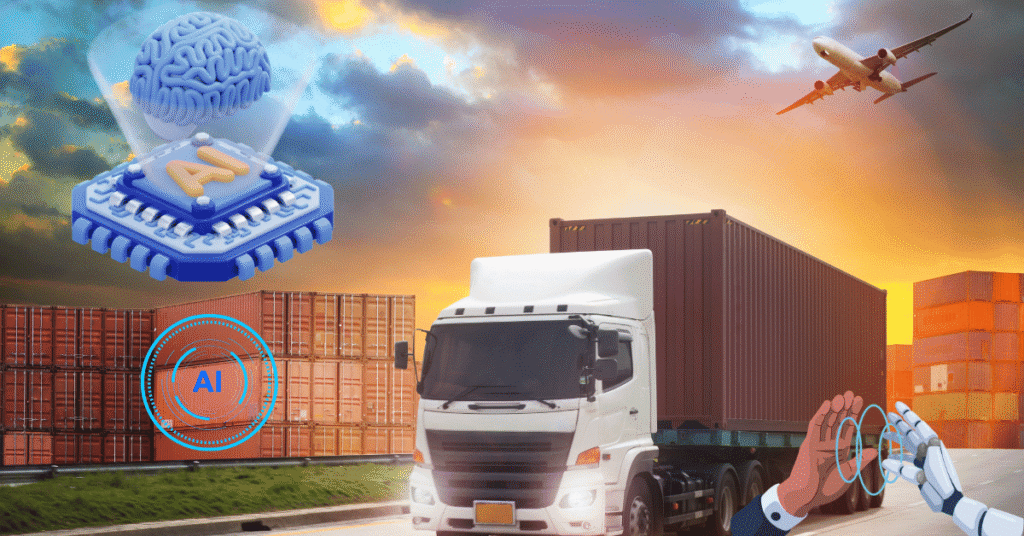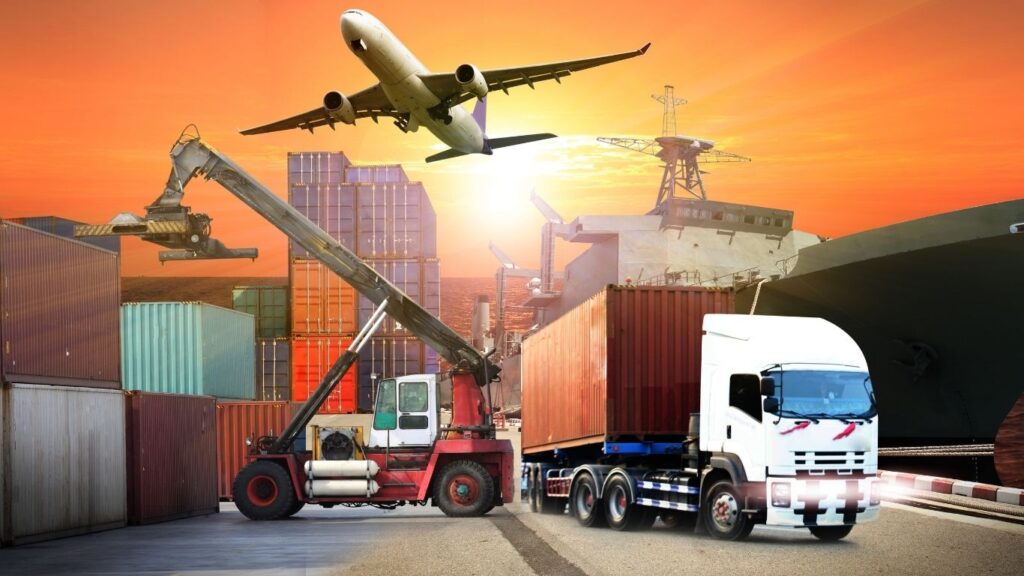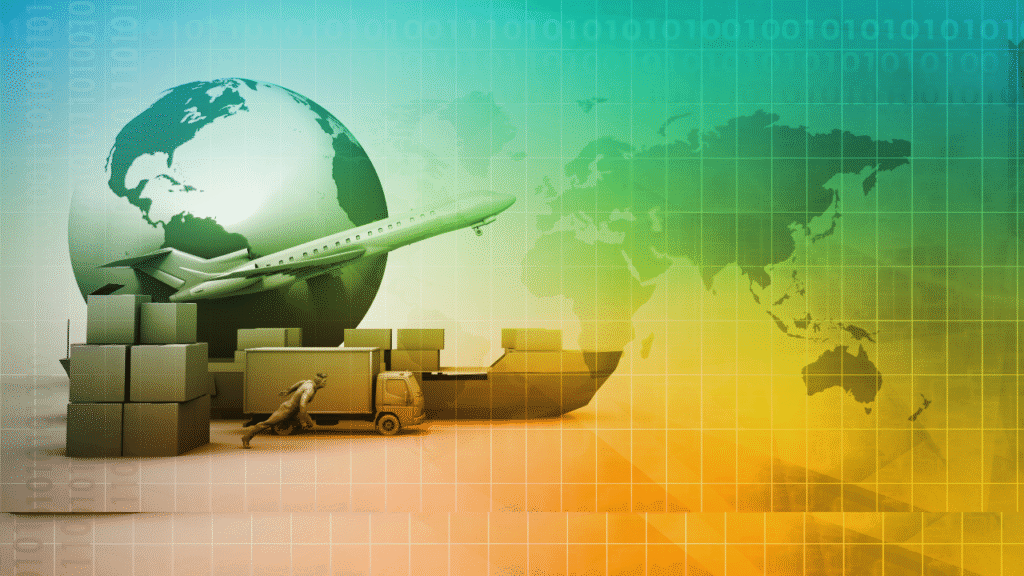Introduction
Massive transformation is taking place within the logistics industry, one of the most complex and fastest-moving sectors, with artificial intelligence at the center stage of this transformation. This technology is disruptive in areas such as supply chain management, warehousing, freight forwarding, inventory control, and last-mile delivery.
Artificial Intelligence in Logistics: Although not critical, the expansion of global trade at this point creates rising consumer expectations for faster and more accurate deliveries; thus, traditional logistics systems of today cannot be sustained. The AI-oriented tools and algorithms furnish logistics companies’ intelligence for better engineering, cost-cutting, emerging risk expectations, as well as a pleasant customer experience.
The following article explores much about artificial intelligence changing logistics from predictive analytics and smart warehouses to autonomous vehicles and robotic process automation.
1. What Artificial Intelligence in Logistics Understands
Thus, artificial intelligence in logistics refers to the machine learning algorithms, natural language processing, robotics, and automation tools applied in logistics and supply chain activities. Altogether, they enable a logistics business to analyze a vast bulk of data, make real-time decisions, and automate routine operations.
With AI implementations, the logistics provider can:
- – The future predicts demand very precisely
- – Better route planning and more fuel-efficient driving
- – Automation of warehouse operations
- – Predict maintenance of fleets
- – Create customer interactions by way of chatbots
- – Deter and avert fraud and disruptions
2. Why Does Today’s Logistics Require AI?
Most recent and modern logistics systems still depend on moderate manual interference, involving much human judgment, leading to inefficiencies and hindrances that increase operational costs.
Artificial Intelligence in Logistics aspires to resolve some of these existing pain points and champions:
- Speed and Scalability: AI systems can analyze a multitude of varied data points in seconds, providing insights for actions.
- Accuracy: The algorithms eliminate the human error factor in forecasting and route planning.
- Cost Reduction: The fuel, labor, and precious downtime saved from automation and predictive maintenance cost much less.
- Agility: Real-time insights allow timely action regarding disruptions, weather concerns, and spikes in demand.
Thereby, AI is providing high intelligence, speed, and competitiveness for logistics.
3. Major Applications of Artificial Intelligence in Logistics
3.1 Predictive Analysis and Demand Forecasting
The history of AI models takes into account product and shipment demand forecasted against historical data as well as current market trends, and also external variables such as weather, holidays, etc. Thus, logistics managers could control inventory levels against stockouts and expedite orders efficiently.
Benefits:
- Lower inventory carrying cost
- Better fulfilment of the orders
- Improved coordination with suppliers
3.2 Dynamic Routing and Optimizing Navigation
Intelligent routing systems based on GPS are the route planners that are AI-based in form, paving the quickest and best ways from the point of origination to the destination while also analyzing real-time parameters such as their road closures, effects of weather, facilities, and even taking into account their delivery time frame.
Merits:
- Less fuel consumption.
- On-time deliveries.
- Reduction in vehicle breakdowns.
3.3 Warehouse Automation
Picking systems with AI-powered robots can detect, move, and package items with minimal human intervention. Space allocation by AI is also used for maximum storage efficiency.
Examples include:
- Automated Guided Vehicles (AGVs)
- Robotic arms for picking and sorting
- AI-driven inventory management software
3.4 Chatbots and Virtual Assistants
AI chatbots are customer service tools that can answer questions about delivery status, order updates, and returns 24/7, relieving support staff from the burden of such questions.
Advantages:
- Increased customer satisfaction
- Less response time
- Reduction in support costs
3.5 Detection of Fraud and Risk Mitigation
Machine learning can identify patterns that suggest fraud or inefficiency within the system. AI tools keep an eye on transactions and announce anomalies for review by humans.
Effects:
- Secure data integrity
- Fraud alerts in real-time
- Compliance with regulations
4. The Role of Machine Learning in Logistics
Machine learning is a smaller derivative of AI in which logistics systems become better and learn autonomously over time without being directly programmed. It uses new data and identifies patterns unnoticed by human planners.
How ML Supports Logistics:
- Inventory Optimization: Improve inventory levels based on prior sales
- Intelligent Forecasting: Forecast future sales, peak seasons, and fleet requirements
With the increasing acceptance of machine learning in logistics, the industry has undergone continuous improvement in agility and performance.
5. The Populace of Autonomous Vehicles with Drones in Logistics
Farewell to self-driving delivery vehicles and drones being mere science fiction. Firms like Amazon, UPS, and FedEx are pouring millions into their autonomous delivery projects.
AI-powered Autonomous Logistics will benefit from:
- Low fuel costs and lower labor costs
- Reduced time of delivery
- Delivery options, safe and contactless
Still, the road ahead involves regulators with technical hurdles, but the future of Artificial Intelligence in logistics will largely revolve around autonomous technologies for both land and air.
7. Importance of Artificial Intelligence in Logistics
Thus, in logistics application of AI is fundamentally not simply an innovation; AI has thus gained the status of a highly conducive economic power that yields unprecedented benefits in the operation and the sustainability of logistics.
8. Challenges and Limitations of AI in Logistics
The implementation of Artificial Intelligence in logistics comes with several challenges, while several advantages of AI could benefit the industry. For AI to be successfully employed in operations, logistics companies have to navigate through some fundamental challenges.
8.1 High Initial Investment
Huge investments in advanced software and hardware infrastructure, and training of employees, present a significant hurdle for the adoption of AI solutions for small-scale companies and start-ups.
8.2 Data Privacy and Security Risks
AI systems inherently operate on a lot of sensitive data concerning their customers and their operations. It has to stay updated with the various data protection regulations that have come into effect (GDPR) and against attacks from hackers.
8.3 Abolition of Workforce
Another problem that comes is that a higher level of automation tends to throw workers out of jobs-in the absence of infrastructure to adequately upskill and re-skill them. Companies must render support to their employees through the transition for the sake of their morale and productivity.
8.4 Integration with Legacy Systems
A great number of warehouses are stuck with issues posed by integration with legacy systems, so that interfacing with modern AI solutions is impeded. As such, this kind of integration may also imply creating a new one altogether, thus increasing programming complexity and possibly costs.
A well-planned strategic approach would ensure that an organization uses AI for successful implementation and harvesting value from it.
9. Future Trends of Artificial Intelligence in Logistics
Artificial Intelligence in logistics has an encouraging future with the momentum from digital transformation. The emerging trends foresee the birth of smart, responsive, and hyper-customized logistics ecosystems.
Cognitive Automation
Next-gen AI systems should ideally move beyond mere automation of tasks to contextual interpretation, real-time decision-making, and adaptation to changes in situational circumstances not conceived of at the time of the original programming. This cognitive scheme would take logistics intelligence to the next level.
Hyper-Personalized Deliveries
AI will hyper-personalize delivery preferences for each customer depending on their history, location, data, and interest in the product. Such hyper-personalization would further nurture customer satisfaction and loyalty.
Greener and Smarter Logistics
Artificial intelligence will serve as a tool for sustainable logistics. From assisting in optimal driving pattern mechanisms to logically regulating energy consumption in warehouses, AI will enable firms to shrink their carbon footprints to achieve green goals.
These innovations are forward-looking and will end up improving performance within logistics and reshaping the definition of customer service and operational efficiency.
A stepwise approach is a must when it comes to implementing AI into the logistics sector. Firms assign themselves tasks concerning drawing strategic road maps for any subsequent applications, hoping for smoother deliveries and better outcomes.
Phase 1: Identify Operational Bottlenecks
Look unto any process-disturbing logistics. These could include, but are not limited to, poor inventory handling, delays in routing, or even outright misperception of required customer service.
Phase 2: System Integration
Integrating the new AI applications must tie into existing ERP/ TMS (Transportation Management System) arrangements. A running system stands for real-time data-sharing and performance.
Phase 3: Train and Upskill Employees
Implementation success is people-dependent.
Phase 4: Measure and Optimize to Get Results
Always measure KPIs; always measure delivery time, customer satisfaction score, and savings. Continue shifting strategies to increase efficiency in line with the advancement in AI system capabilities in order to stay competitive.
Equipped with an appropriate strategy, firms can win their fight for survival with operational renewal and cruise into the digital-first era.
Conclusion
Artificial Intelligence in logistics isn’t just technological change; it is indeed the catalyst of change across the whole organization. It initiates everything from predictive analytics through autonomous delivery to intelligent warehouses. This changes value propositions in how goods move throughout the global supply chains.
Logistics must also be evolving in tandem with this world that gets ever more digital, ever more connected, and ever more demanding. Artificial Intelligence in logistics thus puts companies in a position not only to meet such expectations but also to equip themselves with ways of staying ahead of such demands.



